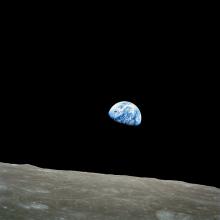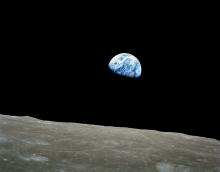Listen to today's episode of StarDate on the web the same day it airs in high-quality streaming audio without any extra ads or announcements. Choose a $8 one-month pass, or listen every day for a year for just $30.
You are here
Soot Line
Life on Earth is based on carbon. It’s one of the most common elements in the universe. So you might think that Earth itself would be packed with the stuff — but it’s not. Carbon accounts for roughly three-hundredths of one percent of Earth’s crust. That means Earth probably formed inside the “soot line” — the distance from the young Sun where conditions were cool enough to form carbon compounds.
The Sun and planets were born from a giant cloud of gas and dust. Most of the cloud collapsed to form the Sun. But a swirling disk of material encircled the young Sun. It contained a rich chemical brew, including a fair amount of carbon.
But the young Sun was so hot that it vaporized nearby bits of carbon compounds and others. It then blew the resulting gases into the outer solar system. At a certain distance away, temperatures got low enough for the carbon to form solid grains — the soot line. Many of these grains were incorporated into the newly forming planets beyond that line. Earth was inside the soot line, though, so there wasn’t much carbon to gobble up.
A recent study said the zone between the soot line and the surface of a star might be a good region to scan for possibly habitable planets. Such worlds would be bigger and heavier than Earth. They might have atmospheres made of methane, and a rich mixture of other carbon compounds — some of the most important ingredients for life like that on Earth.
Script by Damond Benningfield





